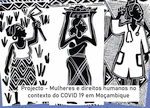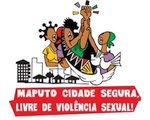Sexual abuse in the context of the
construction of female sexuality
Conceição Osório
Published in: Outras Vozes, Suplemento do boletim n° 13, November 2005
The concept of sexual abuse of women, particularly of adolescents and young women, is used in a very fluid and ambiguous manner both in research and in the law. In studies of sexual abuse, the term is used to mean non-specified forms of violence against the female body, and rape. The concept is used in a highly restricted, but at the same time, vague manner, reflecting generalised discomfort in addressing the subject. This also applies to social representations and scientific theories regarding sexual harassment, sexist remarks and female prostitution, and also in legislation, where abuse does not even feature as a specific term.
For these reasons, and because WLSA is currently conducting a pilot study into gender identities, we feel that it would be useful to reflect on the usage of the term abuse, and also whether it can be conceptualised or if it is simply an expression void of all common sense. From this point of view, sexual abuse excludes all acts committed against women in the context of gender violence, for example, sexist discourse and humiliations which aim to sanction ‘abnormal’ behaviour (in the sense of transgressing against social norms).
However, if we consider that social representations of sexual abuse vary considerably according to age and sex, and that, unlike other notions used in feminist epistemology, the term is used in a very varied and fluid manner, we believe there is a need to construct, or in this case, deconstruct the concept and its underlying values.
Certain assumptions need to be clarified before advancing any methodological proposals. The first assumption is that sexual abuse should be understood in the context of social gender relations, as power relations, with the relationship between sexuality and its social construction being taken as the focal point in the field of gender domination. The second assumption is that the historical context plays a role in forming social values and in the dominant culture’s mechanisms regarding the practice of sexuality.
Thus in Mozambique’s case, as mentioned in the previous issue (Gender Identities and Violence) we need to identify not only the value system that influences the practice of sexuality, but also the mechanisms, spaces and agents which, in different historical contexts, have shaped the social roles and functions of women and men.
In this article we will use our research findings to reflect on the social construction of sexuality among female adolescents and young people, and on the domination and counter-domination strategies used to reinforce or undermine the model of female domination. It is in this context that the notion of sexual abuse is adopted and ‘composed’, according to the agents who use and the spaces that produce the domination system.
Starting with the concept of socialisation through education and the transmission and composition of roles, in the study that we are presently conducting with young students in Maputo city,1 it was found that sexuality (in the sense of the practice of sexuality and representation of this practice) is expressed in three areas: the family, school and among friends. Each of these three areas establishes and organises its own elements of cohesion, which distinguish them from the others. A relationship of conflict/co-operation with the other spaces is maintained: conflict when standards of behaviour are imposed by a particular space, and co-operation when agents move between the different spaces, establishing methods of communication and understanding between them. A question arises from this situation: Does the subject take on different representations and practices of sexuality (each of them legitimate), without creating conflict between them, depending on their environment and its particular values?
We will begin with the family, in which youths of both sexes learn their place in terms of roles and functions. The formulation of roles reflects different expectations and concerns and is expressed in various forms, such as material (division of labour, for example) and symbolic (such as myths surrounding menstruation). The common feature of all these forms is control of the body, the body in all its dimensions (greeting others, working, playing), but principally the sexual body. That is, the body as a utility in the sense of Bourdieu and Foucault.2 The differences in the way of defining the utility of girls’ and boys’ bodies is connected with social power relations and consequently with human rights and with the way in which these rights are understood.
It is in the family (and we have already spoken and written about this at great length), that girls are socialised to be other-oriented and to reproduce the group, achieved through work and motherhood. It is also true that boys are also socialised towards work and fatherhood as both sexes contribute to the maintenance of the social order. However, the values underlying the socialisation mechanisms for each of the sexes are expressed in different ways (due to the immutability of biological differences) and result in unequal rights.
The values underpinning girls’ rights are collectivising, in that they accentuate the complementary nature of girls and minimise their individuality. This absence of individuality, which continues to characterise the philosophy of female socialisation, has its origins in the distant past. It is manifest in the epics and tragedies of Ancient Greece, with Penelope weaving as she waited for her beloved, and Media being punished for her rebellious behaviour. More than twenty-six centuries later, women’s identities continue to be represented as complementary to men’s. This complementarity, which influences the construction of gender identities, forms the model of domination that is essentially constructed on the domestication of women’s sexual bodies.
The silence in the family surrounding sexuality, and the coercive practices that curtail the freedom of adolescent girls (their way of dressing, going out in the evening) in contrast to the relative liberty given to boys, show how the construction of sexual identity is a process of domination which leads to inequality. Although it is true that information about sexuality is kept from both boys and girls, there is a tacit agreement among family members (expressed in conversations and permission granted) that favours and stimulates sexual liberty for boys as a part of the socialisation process.
However, the fact that sexuality is ‘unmentionable’ does not mean that sexual education does not exist within the family. If the values constructed regarding women’s roles is centred on the function of the sexual body, we have to accept that sexuality, in contrast to what we often think, is a basic part of the process of primary socialisation. However, sexual education is inculcated tacitly, and thus more effectively. The most important dimension of the social identities that begin to be constructed within the family is ‘instruction regarding sexuality’.
As an example, we would like to analyse the issue of premature marriages, which continue to occur openly in many regions of the country as the culmination of initiation rites. Premature marriages show what happens in reality regarding the utility of women’s bodies, which are made use of as a resource and as a group survival strategy. The marriages of children to older men are not socially condemned and are certainly not regarded by the various social agents as sexual abuse. This is firstly because such marriages are seen as the norm, and secondly because in reality, abuse can only exist if the group considers there to be an abuser and a person abused. This does not happen precisely because the notion of abuse implies violence and this is not perceived as an integral part of relations between women and men. This situation may lead us to fall into the temptation of thinking that sexual violation does not constitute, socially speaking, a crime. But in fact, families consider sexual violation to be a very serious crime, and this is what leads to shamed silences and the demand that compensation is provided by the violators. It has been shown that sexual violation is a socially punished crime. However, the crime is not punished for the sake of the victim who suffers directly, but for the sake of the family that feels that its capacity to utilise the resource (the female body) fully has been compromised.
At school, girls and boys receive the same knowledge and establish friendly relationships that by their nature lead to adaptations to the family model. In other words, new standards of behaviour are ‘imposed’ and appropriated on top of primary socialisation within the family. But do these new standards lead to conflict with male dominated relations?
At school and in groups of friends, it has been found that, in first place, young girls learn and learn to express, their knowledge of sexual anatomy, their desires, needs and expectations. In the research that we are currently conducting, the discourse of many young girls questioned about sexuality and their own practice reveals their awareness of the power that their sexual body represents. They use, or know that they can use, their body as part of a subjugation strategy. For example, their clothes and behaviour are more part of a game of seduction than an affirmation of their individuality as people. Curiously, these forms of expression, which are socially condemned, were originally produced within the family. It is in the family that young girls learn at first hand the values that lead them to represent and use their body as a means of exchange. This is not to say that new identity constructions are not appearing for both girls and boys that challenge the structure of domination. However, the logic that guides the construction of gender inequality is apparent in the counter-domination strategies developed by young female students.
These strategies should be understood in the context of the social model, in that they reproduce the social utility of the female body in keeping with the domination structure, but also retain the possibility of rejecting this same model.3 It is this possibility and the way that it may (or may not) be the result of different appropriations when ‘composing’ new social identities which we wish to explore in our present research.
We will conclude this article with two issues that our study is beginning to clarify: the need to renew the concept of sexual violence in the sense that it appears to us, not only as a dimension of gender violence but also as its synonym. Gender violence exists in function of a discriminatory construction made over women’s biological sex, transforming it into social sex. In other words, what determined the conceptualisation of gender at its origin was the exercise of violence over women’s sexual body, putting it in its place in social power relations. In this way, all gender violence is simultaneously sexual violence and abuse. From the theoretical point of view, this position implies the need for deconstructing/constructing ‘ideal types’ which could, with greater rigour, guide our understanding of social identities and their relationship with violence.4 The other element is the demand to re-evaluate and study in greater depth the positions revealed in our work concerning the construction of sexuality in the family and school, from the point of view of transmission and appropriation, and their relation with the construction of new social identities.
- September-December 2005, research conducted by WLSA Mozambique.
- The notion of the ‘utility’ of the body is used by Bourdieu (1989) and Foucault (1993) as an expression of values and norms that guide the social model, and as a means of social control.
- This means that counter-domination strategies may conceal the maintenance of the androcratic model in that they preserve structural inequality between men and women.
- The ideal type is a concept created by Max Weber with the objective of operating ‘on reality’. In this sense it is a ‘concrete concept’ that we use to construct the dimensions and indicators of analytical models.
* * *







 Information in English
Information in English



















